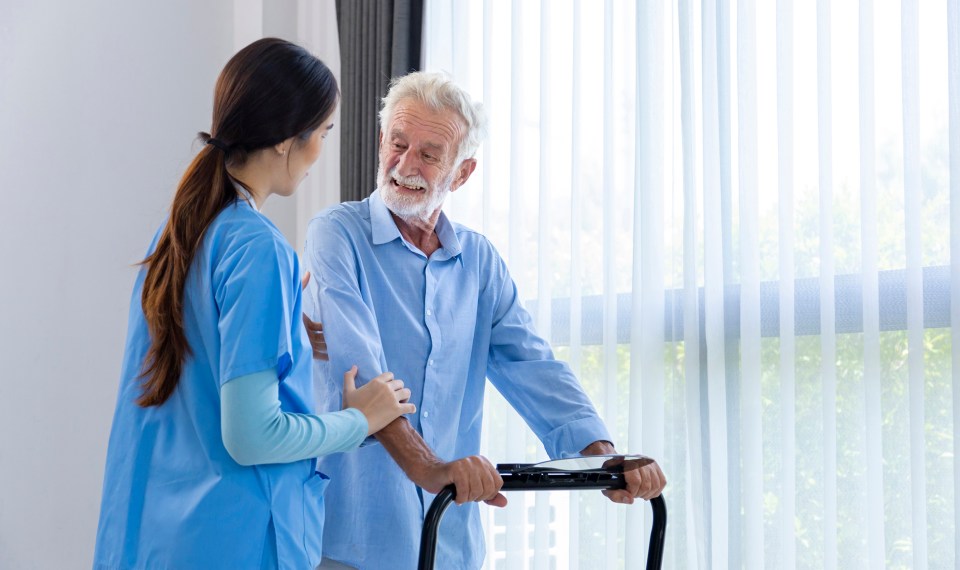As clinicians who work in healthcare, ultimately, we want to help people and in that, we find reward and purpose. Although there are many positives, working as a caregiver has its level of stress that can lead to burnout. There are ways to cope, but first, let’s review the types of stress, what you physically experience and what you can do to lessen the impact.
Stress
There are three types of stress.
- Physiological: This can be caused by an illness or injury or environmental extremes
- Perceptual: This can be real or perceived, such as deadlines, financial concerns and interpersonal relationships
- Imaginary: This is when you are anxious over possible future events rather than an immediate threat
What kind of stress is dealing with a difficult patient? It could be all three. For example, perhaps you have back pain from lifting incorrectly (physiological). You are under a time constraint to attend to this task and get to the next one (perceptual). You feel anxious with questioning yourself and your skills as a clinician, asking “am I doing this right?” or you are fearful of a negative reaction/comment from a patient, coworker or boss (imaginary).
What Does Your Body Do in Stressful Moments?
Try this exercise. Close your eyes and think of a bad experience or situation that you were recently in at work or home. These could include dealing with a difficult patient, coworker or family member. Relive it in your head as if you were watching it on a movie screen. Note your emotional feelings, which could run the gamut from anger, anxiety, fear and frustration to disgust, sadness, helplessness and self-loathing. Note the change in your body as you experience these different emotions. As if you were an outside observer, scan from the top of your head to your feet. Note tension in your face, neck, shoulders, back and chest. Do you feel something in your stomach? Is there a change in your posture? What change has happened in your breathing?
This is just a taste of sympathetic nervous system activation.
Physiologically, the heart rate and blood pressure goes up. Changes in respiratory and gastric juice secretion rate, body temperature, adrenaline and cortisol release rev up. When the sympathetic nervous system is triggered daily, the stress hormones wash through the body continuously, which can be harmful in the long run, affecting the liver, blood sugar levels and immunity. In this flight versus fight mode, we are more emotional and feel increased tension and pain. Essentially, we find ourselves unable to cope with the situation at hand effectively.
It is not the stress that kills us but our reaction to it.
Hans Selye
Recognize Your Stressors and Get to Work
Think of your past circumstances, your emotions and your reactions to stress. How did you physically respond? It is time to develop stress resilience by becoming aware of oneself, regulating emotions and developing the ability to relax during the day-to-day activities as well as during challenging situations. How do you do this?
- Don’t hold onto feelings. If you can put those feelings into words, it will make you aware and then lead you to better choices in reacting to the next situation. Express your feelings when appropriate—we all need to vent—but limit rehashing bad stuff over and over. This gives it more energy and can lead to anxiety for the next coworker you share it with, who may have to work with the same “challenging” patient or coworker. Practice detachment from the negativity by recognizing that it is there but not reacting to it.
- Work hard to reduce feelings of fear. Justification of those feelings may become beliefs and then be seen as truths.
- Accept the feelings and the situation. Be non-judgmental with yourself and practice self-compassion. Everyone makes mistakes. Forgive yourself for poor reactions. Some people fall back into excessively stressful habits from time to time. Simply notice that change without self-criticism and resume stress reducing and healthy practices.
- See a stressful situation as a challenge. Make it an opportunity to improve your life and grow as a person.
- Consider better overall health practices. Eating well, getting enough sleep and exercise can all help reduce stress. Also, find your own personal stress relievers. These are enjoyable activities that you take part in on a routine basis.
- Spend time outdoors. The air in the forest contains the essential oil, phytoncide, found in decaying wood of fallen trees; breathing it in reduces the stress hormone cortisol and increases your immune system.
- Begin a mindfulness and diaphragmatic breathing practice. This can reduce the stress reaction in the present moment.
Job Burnout Management
Do you feel hopeless about solving problems on the job? Are you dissatisfied? Do you need rest breaks to cope? If so, you may be experiencing job burnout. Here’s how to manage it:
- Find an outlet for frustrations. Try to find humor in stressful situations. Take the frequent breaks that you need to work efficiently and effectively.
- Know whom you can turn to staff-wise for support and to resolve problems, but also to get reprieve from a difficult patient or situation.
- Avoid confrontations with difficult colleagues.
- Be more assertive and take control over some aspect of your job.
- Reward yourself for accomplishments.
- Avoid substance use to “escape.” It will just make things worse.
- Don’t take on more than you can cope with. Organize time to accomplish tasks.
- Visualize the positive; think of a good memory, outcome or promotion. Remind yourself why you took this job, and remember the benefits of the job that you love.
Participation and Practice
Diaphragmatic breathing stimulates the vagus nerve, which connects us to the parasympathetic nervous system. We can voluntarily control this! Once able to diaphragmatically breathe, you have the tool to maintain your equilibrium in situations where you used to become tense. Think of your breath as an internal friend to comfort you.
Diaphragmatic Breathing Instructions
Air is drawn deeply into the lungs by flexing the diaphragm and expanding the rib cage. Place your hands and apply pressure to your lower ribs and look down to watch your chest, which should not rise. Expand ribs with the inhale. Inhale for three counts, and exhale longer. Work up to a six-count exhale.
Learn to shape the breath rather than trying to change it; imagine watching the air move in and out. Whenever you sense that you may be trying too hard, reduce your effort and accept each breath for what it is at that moment.
Mindfulness/Meditation
Be consciously aware of what is happening inside you and around you in the moment. Mindfulness is awareness, a state of mind, which requires training and cultivation. Training the mind – stopping the chatter and clearing the mind of negative thoughts – is a breaking away from habitual thought patterns. It is an exploration of inner workings of the mind, witnessing scattered thoughts without letting them overcome you.
To practice mindfulness and meditation, find a quiet location with few distractions and sit in a comfortable position. Notice the environment around you. Do a body scan and observe your state of mind. Feel the flow of your breathing and relax the body. Find a focal point. This could be a word, phrase, object or your breath. Relax your body, breath and mind while maintaining your focus. Rest in the presence of your own being.
You do not need to find time to sit. You can practice this anywhere and anytime. Essentially you can meditate through mindfulness throughout your day. Simply focus on the task at hand with your full attention. For example, as you are washing dishes, attend to the weight underneath your feet, the coolness or warmth of the water on your hands, the soapiness of the water, the smell of the fragrance and the slipperiness of the dish and the texture of the sponge.
A few minutes of meditation done regularly may improve your mood, your health, alleviate pain and anxiety, and reduce stress. It can get you to a peaceful place and keep you there. It’s a rebalancing, a re-fueling, so we can be more present for our patients and loved ones.
The content of this site is for informational purposes only and should not be taken as professional medical advice. Always seek the advice of your physician or other qualified healthcare provider with any questions you may have regarding any medical conditions or treatments.




